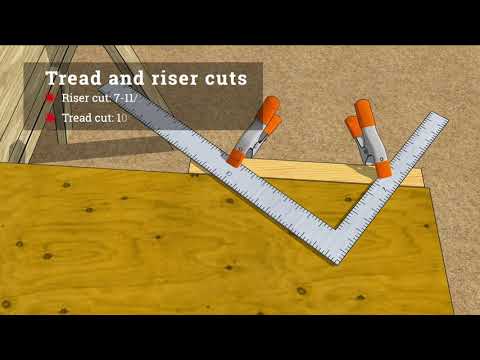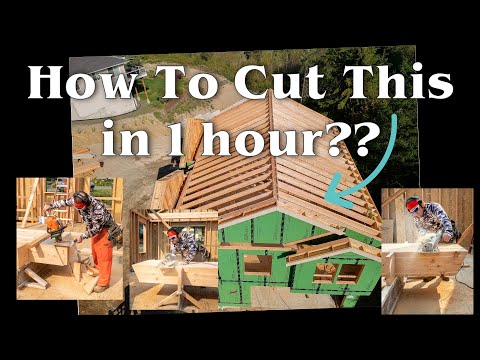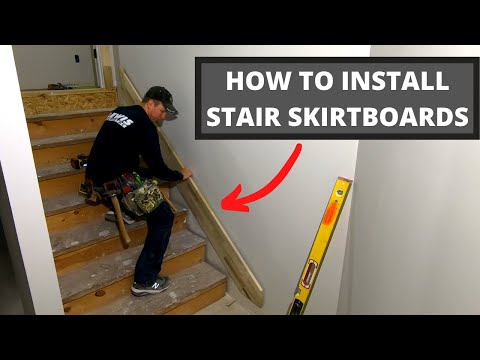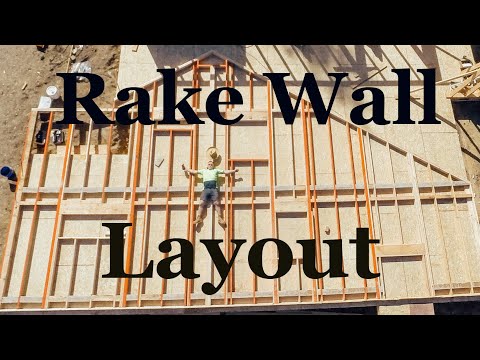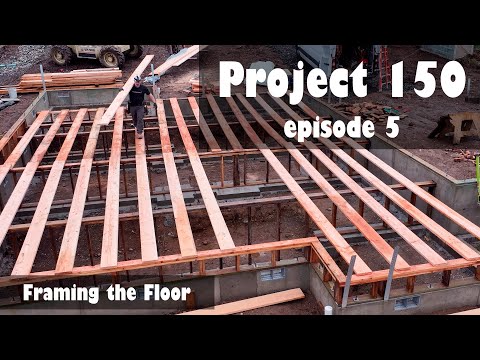Stair building is a complicated complex of math, carpentry, memory, and attention to detail. Like remembering to account for the flooring types while you're still in the framing stage. In this video, Tim Uhler of Awesome Framers simplifies the process with an old-fashioned pitch block and a new-fangled calculator.
OK, the calculator is not really newfangled; they have been around for decades.
First, do the math for the rise-and-run
Punching the numbers on a Construction Master calculator, Tim Uhler enters the total rise (124-1/8 inches), the number of rises (16) to get the rise of each step (7-3/4 inches). Next, he enters the run of each step (10-1/4 inches) to discover the diagonal: 12-7/8 per step.
With those numbers, he marks a pitch block, 7-3/4 up and 10-1/4 over. When cutting the diagonal, he takes line with the saw blade (as opposed to leaving the line) to account for the pencil line thickness when marking the stock.
Before cutting the expensive pieces of wood, though, he does the math again to make sure it is correct. Math is cheap, lumber is expensive.
Cut the pitch block
He stores the 12-7/8 diagonal in the calculator memory. Now he can add it to itself to find the points for each step and consequently, where to place the pitch block for scribing. Next, he slips the pitch block between each point and scribes the rise and the run.
At the bottom, he subtracts the thickness of the tread (which is analogous to the subfloor), and at the top he subtracts the thickness of the riser.
To make sure the cuts are consistent and to give him the opportunity to show out his gi-normous beam-cutting Skilsaw, he stacks the three stringers flush, tacks them together, reaches for the saw, and pauses for a joke ("Wait, how do corded tools work?")
Next, cut the stringers
Because round blades do not make square cuts, the cuts must be finished with a reciprocating saw.
Conscientious framers like Tim add a 1x4 outside the outer stringers to create a drywall pocket between the stair framing and the wall framing. Lesser framers do not do this.
Make sure when nailing the 1x4s to angle the nails so that the points do not protrude from the opposite end—because those nail points can really tear up your hands and clothes quickly and effectively. Ask Tim how he knows this.
Screw through the stringer and 1x4 into each stud. Tim uses FastenMaster LedgerLok screws.
For fastening the treads to the stringers, don't just rely on the glue to eliminate squeaks. Tim uses BECK America 3-1/4 inch spiral-shank nails dipped in glue. When the nail is shot into the lumber, friction heats up the glue and activates it into the surrounding lumber.
Fasten the risers and treads
He uses 2x8s as risers and glue and nails them in place. He also sings for the camera, but let's just leave that alone for now.
Now he glues and nails the treads in place, which are precut OSB treads. He glues atop each stringer, along the top of each riser, and along the back of each tread. Next, he nails into each stringer and riser top.
The video does not show him nailing the backside through the riser into the back edge of the tread, so we must assume the glue takes care of this connection.
